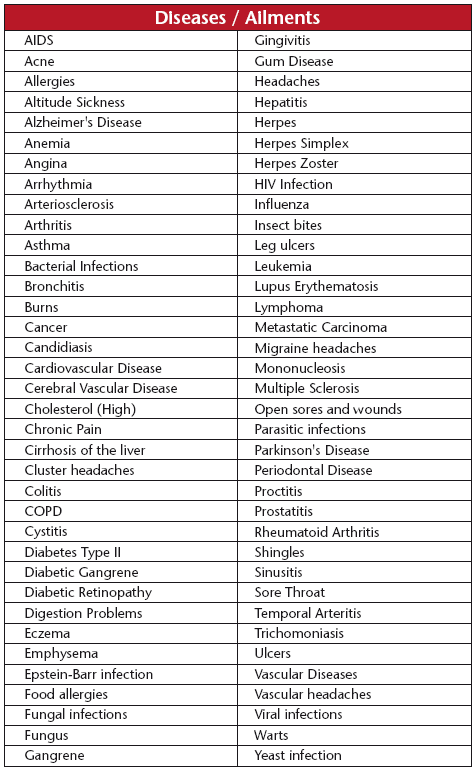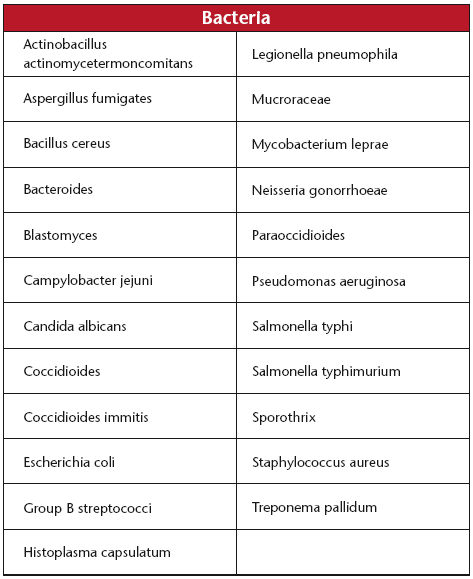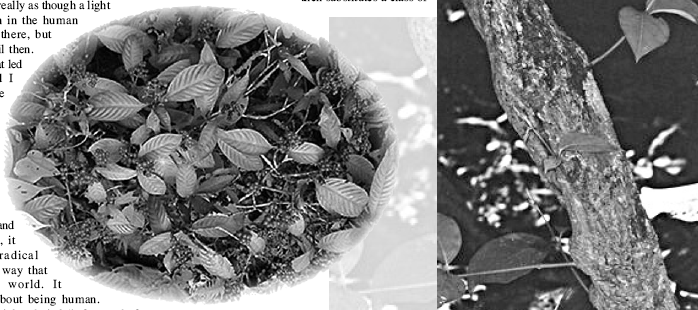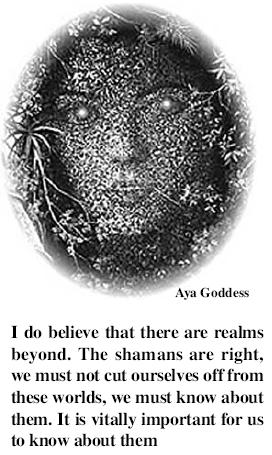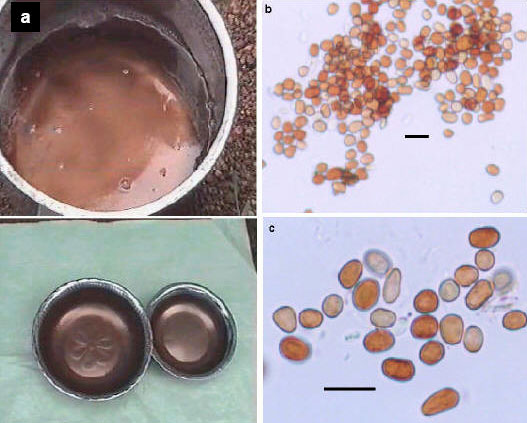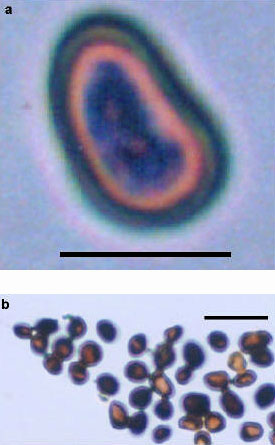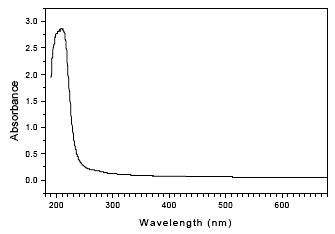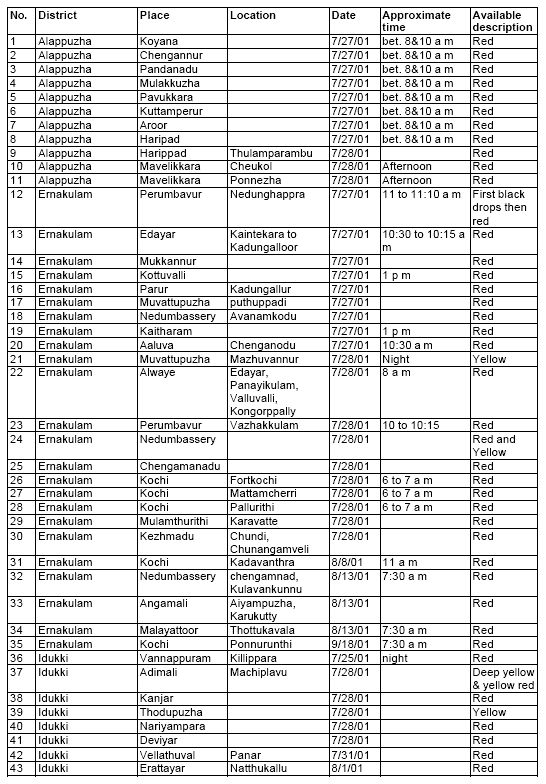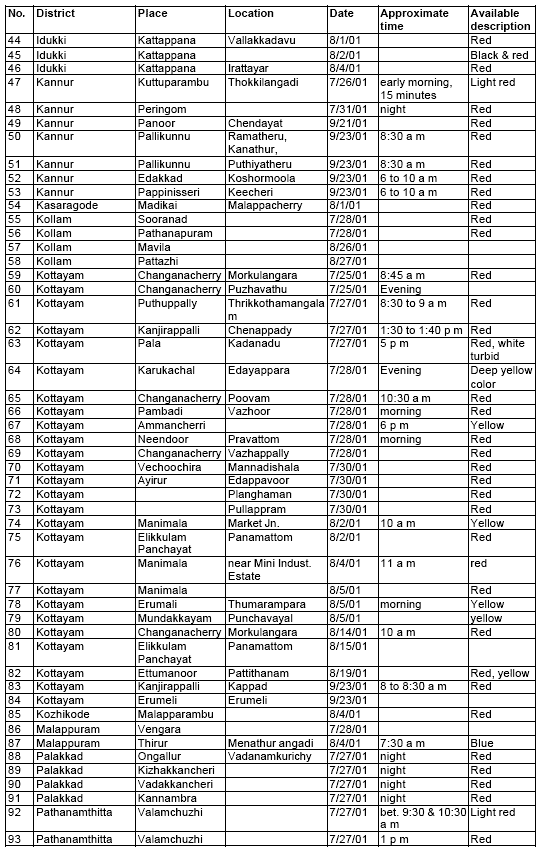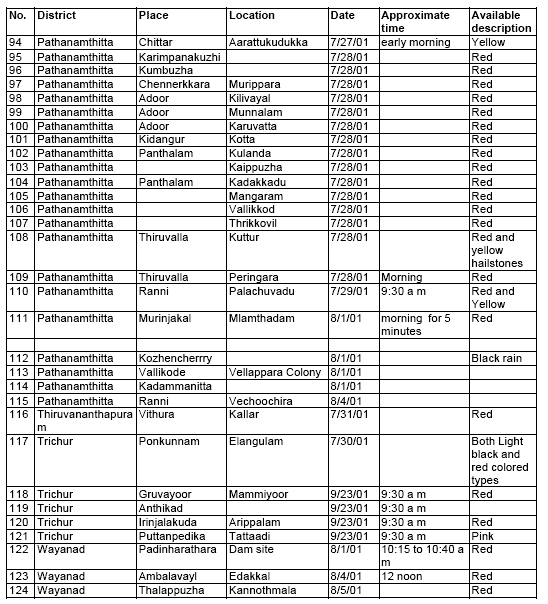|
Here we show how the observed features of the red rain phenomenon can be explained by considering the fragmentation and atmospheric disintegration of a fragile cometary body that presumably contains a dense collection of red cells. Slow settling of cells in the stratosphere explains the continuation of the phenomenon for two months.
The red cells under study appear to be the resting spores of an extremophilic microorganism. Possible presence of these cells in the interstellar clouds is speculated from its similarity in UV absorption with the 217.5 nm UV extinction feature of interstellar clouds.
Modern version of panspermia considers comets as the delivery vehicles that spread life throughout a galaxy 1-3. Comets can protect cells from UV and cosmic radiation damage and comets can drop cells high in the atmosphere to float gently down 4. Paleogeochemical evidence show that life appeared on Earth as early as 3,800 million years ago 5 or even before that 6, immediately following the Earths surface cooling.
This gives too short a time for the evolution of life to take place from simple precursor molecules to the level of prokaryotic and photoautotropic cells and it leads to the argument that life has earlier originated elsewhere and then it was transported to primitive Earth 7. There is evidence to show that microbial life can remain in a resting phase for millions of years, which can enable them to make long space travel 8-11.
There is also the possibility of liquid water in comets, which could support active life in comets 12-15. Some of the observational data from comets have also been interpreted as evidence to prove biological content in comets 16. In the extreme conditions in comets, if not in active state, life can be expected to be present as spores. Spores in the dormant state, undergo no detectable metabolism and exhibit a high degree of resistance to inactivation by various physical insults 17.
Thus the most possible means by which
microorganisms can arrive in a planet after a journey in space must
be as spores. Considering the universal nature of biochemistry
18,
the chemical makeup of extraterrestrial life forms can be expected
to be similar to the one found on Earth.
Though this claim is
extraordinary, there appears no other less extraordinary way to
explain the mystery of red rain in Kerala.
The news reports of this phenomenon appeared in Nature 23 and various newspapers and other media and are currently carried by several websites 24-29. The red coloured rain first occurred at Changanacherry in Kottayam district on 25th July 2001 and continued to occur with diminishing frequency in Kottayam and other places in Kerala for about two months.
The red colouring of the rainwater was found to be entirely due to the presence of tiny red cells about 10 micrometers in size, which appeared dispersed in rainwater. These cells had some similarity in appearance with alga cells. From the magnitude of the phenomenon, it can be estimated that several thousands of kilograms of these cells are required to be there in the atmosphere to account for all the red rain.
From where the huge quantities of these cells originate and how they reach the rain clouds to cause red rain for two months is found to be a mystery. In majority of cases the colour of the rain was red. There were a few cases of yellow rain and rare unconfirmed cases of other colours like black, green, grey etc. Coloured hailstones were another reported case.
It is easy and non-controversial to
dismiss this phenomenon without much study by stating some
conventional, simple and unproved reasons like: dust from Sahara,
pollen grains, volcanic dust from distant volcanoes, fungal spores
from trees, algae from sea and factory pollution etc. But a closer
examination of the features of this phenomenon and the properties of
the cells show that these kinds of reasons are not valid.
Being an unusual phenomenon the local
press have given much importance to this. Still there can be several
cases where people have not reported the incidence to the press.
Also there can be several cases, which went unobserved by the
people, such as the cases, which occurred during night. But the
available data is sufficient to show the trend and nature of the
phenomenon (See supplementary information for a list of red rain
incidences with time and place).
Thus the cells are not something which accumulated in the atmosphere during a dry period and washed down on a first rain. It was found that several cases of red rain phenomenon have occurred on rainy days after and during normal rains. Thus it cannot be again assumed that the red cells came from some accumulation in the lower atmosphere.
The vessels kept in open space also collected red rain.
Thus it is not something that is washed out from rooftops or tree leaves. It appears as if the rain clouds in some region are suddenly mixed with red cells.
It may be argued
that the cells arrived here, from a distant source like a desert in
another
part of the world, through some wind system. But in such a system it
is hard to explain the repeated delivery of these cells to target
over a few districts in Kerala for two months while not over other
adjacent States in India, despite the changes in climatic conditions
and wind pattern spanning over two months.
A gap in the red rain reports is due to the
absence of rainfall in the State during that period. If cell clouds
are created in the stratosphere at various heights by a mechanism of
meteor fragmentation and disintegration then clouds of such cells
can slowly settle down to the rain clouds to give such a pattern of
red rain. This idea is elaborated with some actual calculations in
the next section.
This idea is also elaborated in the following section.
Even though this matter appeared in news media we have personally interviewed the people who have experienced this loud noise to understand the nature of sound they heard. The people described the sound they heard at about 5:30 a.m. on 25th July 2001, as an extremely loud and sharp noise which was distinctly different from thunder.
Their description of the nature of the sound agrees with that of a sonic boom from a meteor 30-32. Sonic boom is a high amplitude low frequency sound, which lasts for only a fraction of a second. This kind of infrasonic sound can induce resonant vibrations in building structures giving the fearsome impression of a roof collapse which some of them agreed to have experienced.
The sound cannot be that of a thunder because thunderstorms are characterized by a series of small and large lightning strokes and in the present case people heard only one loud bang.
Thus it can be reasonably argued that the extreme
loud noise heard by the people was a sonic boom and a meteor
airburst did take place on 25th morning. The red rain was first
observed at Changanacherry a few hours later at around 8:45 a.m. on
the same day. Then on the following days there were reports of red
rain from other places which are separated by as distant as few
hundred kilometers.
The path of the meteor travel can also be guessed from the geographical distribution pattern. Usually during a large meteor fall, fragmentation of the original body takes place and these fragments appear to be distributed over an elliptical area 33, 34. This region (Fig. 2) in the present case has a size of 450 km by 150 km. This large area is possibly due to the fragile nature of this cometary meteor, which causes fragmentation during its flight in the upper atmosphere at a low angle.
The fragments would get disintegrated to fine particles during its downward travel. Thus each of the fragments can form a column of fine particles made up of red cells. Each of these columns, which make slow vertical decent from the stratosphere, can finally interact with the rain clouds to cause highly localized red rain phenomenon at different places.
Hence each case of red rain report can be equated to a fragment of the meteor.
Maximum cases of red rain and associated phenomenon occurred at places in Pathanamthitta and Kottayam and Ernakulam districts (Fig. 1c far above), starting from the first few days of red rain phenomenon. These districts mark the head of the elliptical region. The tail region lies in the Kannur district in the north.
From the
above pattern of red rain, it can be inferred that while falling to
the ground like a reentering space craft the meteor has travelled
from north to south in a south-east direction above Kerala as shown
in Figure 2 and airbusted above Kottayam district.
The settling velocity of small spherical particles is described mathematically by Stokes Law, given as:
The red rain particles are of about 10 micrometers in size and assuming their density as one and half times as that of water, the settling velocity of these particles are computed using Eq. 1 and tabulated in Table 1 for various altitudes in the atmosphere.
Table 1. Settling velocity of cells in atmosphere
The table lists the computed settling velocity (using Eq.1), at various altitudes in Earth’s atmosphere, for spherical particles having a size of 10 micrometers and density 1500 Kg/m3.
This table shows that the settling velocity do not vary
widely with altitude, despite the large variation in air density.
The values of air density and viscosity are that of international
standard atmosphere.
Thus it is theoretically possible for the red rain phenomenon to occur over the same geographical region for extended periods like 60 days if the stratosphere above that region contains suspended red rain particles at different heights. Disintegrating fragile cometary meteor, which contain huge quantities loosely packed red rain cells can deposit the same in the stratosphere at different heights.
Depending upon the height into which the collection of particles were thrown into the atmosphere during the disintegration of meteor fragments in the air, the time they take to reach the rain clouds can differ. This explains the temporal distribution of red rain. Above simple modelling only gives an approximate solution to the actual situation.
Presence of air movement or wind, variations in particle size (size has square dependence), shape and density, clustering and adhesion of small particles to form large grains etc. can greatly increase or decrease the settling rate.
Thus micro particles in the stratosphere
can remain there for several months before finally reaching the
ground. In the absence of rain clouds, the settling red rain causing
particles will be invisible if they reach lower atmosphere, as they
will get dispersed in the wind. Thus if the meteor disintegration
occurred during a dry season this phenomenon would have gone
unnoticed.
It explains why the phenomenon did not occur in neighboring states Karnataka and Tamil Nadu while it made repeated appearance for two months, mostly concentrated in certain districts in Kerala.
But it
appears impossible to find a natural terrestrial process, which can
account for these features of the red rain and provide such
explanations.
The characteristics of the cells collected from different places were the same showing a common origin. The red rain cells appears in the rainwater as a fine suspension.
This gives the water a reddish brown color (Fig. 3a).
The cells are about 10 micrometers in size, almost transparent red in color and are well dispersed in the rainwater. The resulting color of the rainwater is not turbid, but it has an appearance like a red dye solution.
Color of the diluted red wine and red color with a tint of pink under reflected light are matching descriptions for the red rainwater. When allowed to stand for several hours the cells settle to the bottom of the vessel and the water becomes colorless.
Under low magnification cells look like smooth, colored glass beads (Fig. 3b).
Under high magnifications (1000 x) their differences in size and shape can be seen (Fig. 3c). Shapes vary from spherical to ellipsoidal and slightly elongated types. The thick and colored cell envelope of the cells can be well identified under the microscope. In a large collection only a few were found to have a broken cell envelope. No nucleus could be observed in the cells even after staining with acidified methyl green dye (Fig. 4a).
The cell after the dye the penetration clearly shows a layered structure.
The majority of the red rain cells have reddish brown color but a small percentage of cells are white or have colors with light yellow, bluish grey and green tints. To further ascertain the biological nature of these cells, they were tested for cell proteins by Xanthoproteic test. In which the cells were heated with concentrated HNO3 and then treated with NaOH solution. The yellow coloration of the solution indicated the presence of proteins in the cells.
The cells were subjected to some physical and chemical conditions to test their ability to survive extreme conditions. The cell wall is not damaged by H2SO4 but was found to get digested by concentrated HNO3. The cells retained its color and shape even after boiling in water for several minutes. To test how the cells would change on dry heating, it was placed in a heating stage under microscopic observation.
As the temperature was increased progressively to a maximum of 370) C, the color of the cells changed more and more brownish and finally blacker. No rupture or breaking of the cell wall took place, but a certain amount of shrinking in the size of the cells could be noticed (Fig. 4b). The cell wall could be seen clearly even after the heat treatment.
However, the color change and size reduction started occurring only on heating above 200) C, which suggests that these cells are possibly having an ability to survive heating while entering a planetary atmosphere.
To study the effect of low pressure, the cells were placed in a vacuum chamber and the pressure was reduced to 0.01 millibar. No damage could be seen for the cells after this low-pressure treatment.
This shows that the cells can survive low pressure without damage.
The red rain was subjected to a spectrophotometric examination.
The UV- Visible absorption spectrum of the cells suspended in water is shown in Fig. 5. The spectrum was recorded in comparison with distilled water using a Shimadzu model UV-2401 PC spectrophotometer. The spectrum shows significant absorption of UV radiation by the cells.
This can be interpreted as an indication of the presence of effective UV screening compounds in the cells. Thus the cells can possibly survive the damaging UV radiation in space.
The peak UV absorption occurs near 200 nm and this has
important significance in explaining the interstellar UV extinction
curve, as discussed in next section.
Findings during the past few decades show that a wide range of organic compounds exist in the interstellar clouds contrary to the earlier idea that interstellar dust clouds are inorganic grains.
As an extrapolation to these findings, it is now more conceivable than the past to think of the possibility of actual microorganisms in interstellar clouds and their possible arrival to Earth through comets. One of the reasons for assuming the presence of microorganisms in the interstellar clouds is the UV absorption characteristic of the interstellar clouds in which a peak is found near 217.5 nm 36.
Several explanations have been proposed
by many to explain this interstellar extinction curve
37. But none
of these explanations are fully successful to explain the curve
38.
In this context the presence of red rain cells in interstellar space as a component of the dust clouds can be speculated on the basis of the UV absorption property of the red rain cells. The cells suspended in water shows a strong peak near 200 nm (Fig. 5). If this peak is shifted to 217.5 nm then it can account for the interstellar UV extinction.
It is to be seen whether the red rain cells, when existing in interstellar space like conditions of low temperature and high vacuum, will show a shift in absorption peak to 217.5 nm. If so then the presence of red rain cells in interstellar clouds can be suspected.
Comets, which originated in the interstellar clouds as aggregates of red cells and dust grains, embedded in an icy matrix of gaseous compounds can be captured by the Sun during its passage through an interstellar cloud 46.
Such
comets can later seed the planets or the cells and dust that
survived the formation of the solar system can also end up in comets
to seed the planets. Thus cells in the interstellar clouds can reach
planets as expected in cometary panspermia.
They have larger size (3 to 4 times) when compared to bacterial spores, which means more radiation pressure on them to move away from the star. If the mass of the cells remain low due low density under dehydration, then radiation pressure can dominate over gravitational attraction. When the Sun like stars reach red-giant stage, the temperature in Earth like planets increase to high levels where only extremophilic organisms can survive.
Finally when the oceans in the planets evaporate away it can possibly launch the spores of extremophilic organisms like the red rain cells into space along with the water vapour.
During a red-giant phase a star emit less UV radiation, thus cause low harm to microbes in space. The cells driven out from the planet eventually reach the interstellar space and act as potential seeds to seed later planetary systems in a next generation star. Thus life can possibly continue to exist through several generations of stars.
In this paper we have shown how the red biological cells that caused the red rain phenomenon of Kerala may have originated from a cometary body. As further supporting work we have investigated the growth conditions and the reproduction techniques of the red rain extremophiles.
We will be reporting
immediately the extraordinary results of this study in another
paper.
G. L. is the main author and is responsible for the facts and claims presented in this paper. A. S. K. has contributed to the paper by giving valuable assistance to G. L. for this investigation. We greatly acknowledge the help of George Varughese for collecting many of the samples and important information about the phenomenon.
We thank Dr. A. M. Thomas for first approaching us with a coloured rainwater sample and Dr. Sabu Thomas for providing photomicrography facility.
We also thank the teaching,
administrative and technical staff members, research scholars and
students of SPAP and several others who have encouraged and helped
this work.
Supplementary Information
A List of 124 reports of colored rain cases in Kerala during the period July –September 2001, compiled from various news reports and other sources (List sorted by district).
|

